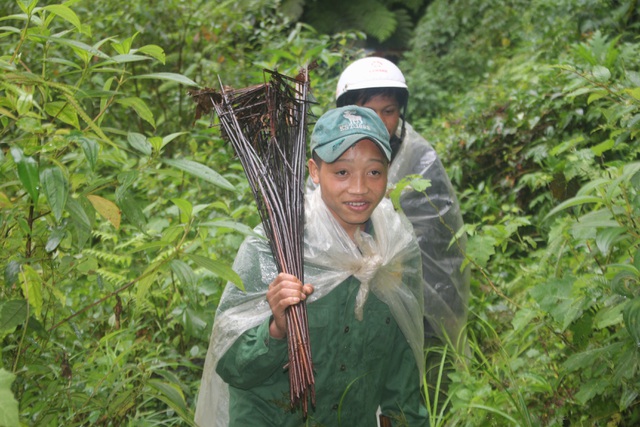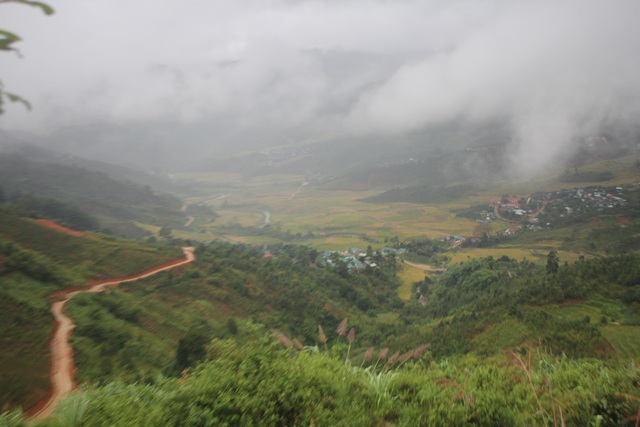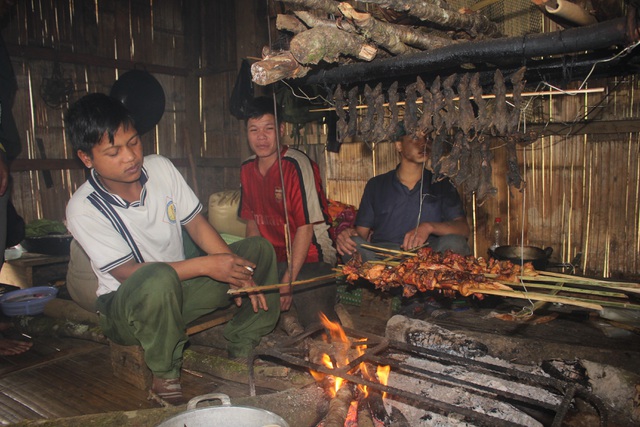
Preparing for a rat hunting
The Xo Dang or Se Dang ethnic people live in Mang Ri Commune, Tu Mo Rong District, which is 1,200 metres above sea level. They are in a hurry to harvest the crops and prepare to greet the new year. Mang Ri Commune is surrounded by Ngoc Linh Mountain with 1,200 population in 500 households.
Xo Dang people know how to work on the terrace fields for a long time ago and this is also the biggest rice hub of the Tu Mo Rong District. Besides rice, there are various valuable herbs on Ngoc Linh Mountain including ginseng.

Ngoc Linh Mountain
90% of the local people plant red ginseng and 60% plant Ngoc Linh ginseng. They are hired by Ngoc Linh Kon Tum Ginseng Company to raise Ngoc Linh ginseng and earn good profits from farming. Traps can easily be found around the ginseng gardens as they are often attacked by the "aristocrat rats" that eat the ginsengs.
36-year-old Gia A Ngom said, "Rats that are over three years old are the most tricky. As the ginseng starts maturing, they will steal the ginseng and bring it to their burrows. Since they target valuable ginseng, we call them aristocrat rats."
He continued saying that since the rats often eat ginseng, those rats are also very valuable. The locals often catch the ginseng-eating rats in spring as the offerings to the ancestors and gods and to treat visitors.

The ginseng-eating rats are special food for the locals
It's a long wait and trip in order to hunt the rats, the locals have to prepare food and warm clothes to walk to the mountainous gardens and lay in wait for the rats. The simple traps can catch rats that weigh 800gr to 1kg.
"The gardens are protected with trapping pits that have spikes. We take shifts to patrol to protect the gardens and place traps. Those rats are specialities during occasions like weddings," said 40-year-old A Chung. "We can track the rat tracks to place traps or put the traps near hollow trees or small burrows. Rats often appear in March or April when the ginseng produces flowers."
After one day, each person often catches three to four rats.
H'Lang, one of the pioneers that help develop terrace rice fields and herb planting in Mang Ri Commune, said, "The people here rarely travel. Our lives improved thanks to the ginseng and the rats are smoked and made food for special occasions."
According to H'Lang, the rats are often cooked with bananas and wild bamboo shoots or stir-fried with chilli and lemongrass. Offering the ginseng-eating rats during weddings is a respectful gesture to the other families.
The Xo Dang People have two most important Tet celebrations in the year which are Giot Nuoc (Water Drop) and Lua (Fire). Everyone will gather together to distill wine and food and offer to the ancestors and gods what they have made in the year to call for a peaceful new year. Dtinews
 As Tet Holiday nears and the harvest season comes, the people living near Ngoc Linh Mountain, Kon Tum Province, will start hunting for the rats which often eat ginseng to treat visitors and as an offering to ancestors.
As Tet Holiday nears and the harvest season comes, the people living near Ngoc Linh Mountain, Kon Tum Province, will start hunting for the rats which often eat ginseng to treat visitors and as an offering to ancestors.